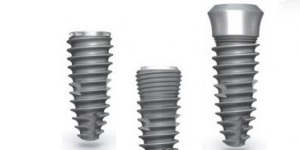
Dental implants and titanium dioxide nanotubes
2015-09-05
اندازه ایمپلنت دندان
2015-09-05Dental implantology is one of the most popular and intensively researched topics of current dental medicine. The necessity for the former complicated preprosthetic surgical procedures to facilitate the partial dentures has recently been decreased with the widespread construction of implant-supported prosthesis. Nevertheless, the alveolar deficiency that impedes the insertion of dental implants makes a number of similar reconstructive procedures inevitable. The posterior maxilla is one of the most challenging anatomic locations for the implant placement that requires adjunctive surgical procedures. This special issue covers leading researches and reviews on this topic that we believe would contribute to clinicians
The main reason for that is the pneumatization of sinus subsequent to the tooth loss and the concomitant excessive alveolar resorption. Insufficient subantral bone and coexisting increased interarch distance necessitate a combined sinus lifting and augmentation procedures. T. Kanno et al. reported the results of their retrospective study entitled “Simultaneous sinus lifting and alveolar distraction of a severely atrophic posterior maxilla for oral rehabilitation with dental implants” in which they performed combined sinus lifting and alveolar distraction osteogenesis in a case series with 27 individuals. The study revealed a histomorphometric similarity between the new bone formed by the presented technique and the bone generated via the sinus lifting only. They also accomplished stable implant rehabilitations within this topic
The quality and the quantity of the host bone are the key determinants for successful dental implants. The quantity of the bone may be estimated via advanced radiological techniques in a high precision. However, a definitive accuracy cannot be pronounced although a number of techniques are available to evaluate the quality of bone. H. Bilhan et al. have reviewed the current techniques used for the estimation of the quality of the host bone while they simultaneously reported the results of a pilot experimental study that compares the densitometric evaluation of the dental volumetric tomography (DVT) with micro CT with their study entitled“How precise is dental volumetric tomography in the prediction of bone density?”. The results of this study revealed that the Hounsfield unit evaluation via DVT is not a reliable method to evaluate the density of bone






